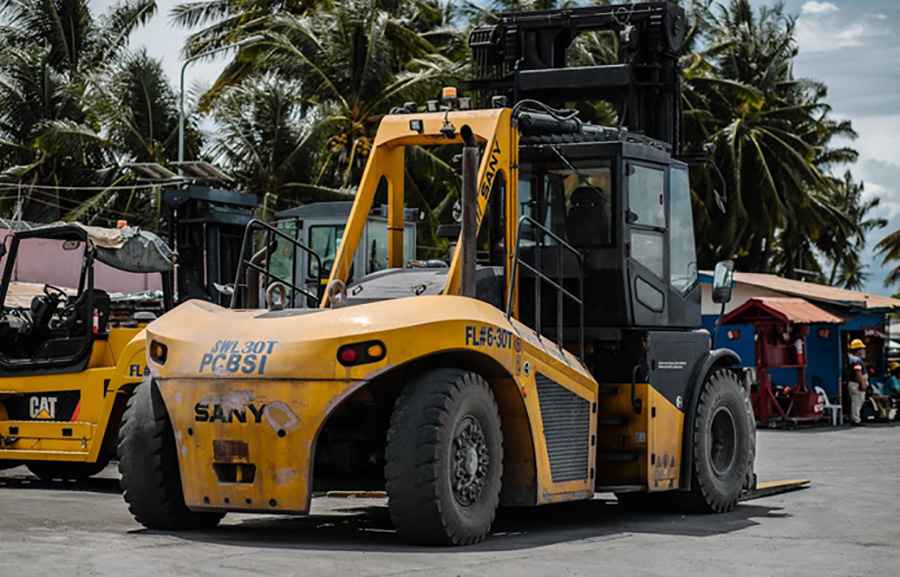How Forklift Training Improves Roadside Safety
Forklifts are a regular sight in warehouses, construction zones, and distribution centers. But they don’t always stay tucked away indoors. Sometimes, these machines need to operate close to, or even on, public roads. That’s where things can get risky. When handled improperly, forklifts can pose real threats to roadside safety. That’s why proper training matters more than people often realize.

Common Roadside Risks with Forklifts
Roadside hazards aren’t just for cars and trucks to worry about. When forklifts cross paths with traffic, pedestrians, or loading areas near public roads, things can go sideways fast. Every year, thousands of forklift-related injuries happen, and a good chunk of those stem from a lack of proper training.
Think about forklifts moving materials across a street between two buildings. If the operator doesn’t know how to deal with blind spots, shifting loads, or when to signal, accidents are just waiting to happen.
Key Benefits of Forklift Safety Training
Learning to drive a forklift is only part of the story. Solid training helps operators build a “safety-first” mindset, especially in unpredictable places like roadside zones. One way to ensure operators are properly trained is to use US Forklift Certification's training, which offers a convenient and OSHA-compliant option. Good training courses usually cover things like:
- How to safely share roads with others
- Staying alert around pedestrians and nearby vehicles
- Dealing with hills, rough patches, and visibility issues
- Following local traffic rules and OSHA regulations
With the right training, operators can quickly assess a risky situation and respond the right way. That kind of awareness makes a huge difference when you're operating near roads.
OSHA Requirements for Forklift Operators
OSHA, the Occupational Safety and Health Administration, requires all forklift operators to get certified. That training needs to cover not just the basics, but also less common scenarios, like working outdoors or near traffic.
Here are a few of the big points their training should cover:
- Daily safety checks
- How to lift and balance loads
- Emergency actions
- Handling tricky or unexpected conditions
Operators who are trained properly are less likely to cause accidents, and that helps keep both workplaces and roads safer.
How Forklift Certification Improves Road Safety
So how exactly does training help? Here are a few clear benefits:
1. Improved Hazard Awareness
Training helps forklift operators stay alert to things like curbs, other vehicles, and foot traffic. That kind of attention can stop a lot of accidents before they happen.
2. Reduced Equipment Malfunctions
When operators are trained to do daily inspections and maintenance checks, they catch issues early. That way, you're not stuck dealing with a forklift breaking down in the middle of a road crossing.
3. Clear Communication Practices
Training teaches the importance of hand signals, eye contact, and other cues that help people understand each other, even in loud, busy environments.
4. Better Understanding of Road Rules
Operators who understand how road safety works are more likely to follow the rules, signal properly, and avoid surprises for others on the road.
Real-World Forklift Use Near Roads
Construction Sites and Street Work
In cities and towns, construction sites often stretch out into the street. A trained forklift operator will know how to safely move materials without blocking traffic or putting others at risk.
Warehouse Complexes with Road Access
Sometimes warehouses have multiple buildings separated by public roads. Operators need to understand the right way to cross those roads safely, from signaling to checking for oncoming cars.
Event Setups and Temporary Road Access
Forklifts are often used behind the scenes to set up big events. Even if it's just for a short time, operators need to stick to safety rules when they’re moving through public spaces.
Online Forklift Certification Options
With people busier than ever, online training has become a go-to option. A good example is to provide an OSHA-compliant program that can be done in less than two hours.
Their course walks operators through:
- Safety guidelines
- How to do inspections
- Proper driving techniques
- Spotting potential hazards
When someone finishes the course, they get a 3-year certification card, printable proof of completion, OSHA forms, and even a hardhat sticker. It’s a practical way to make sure safety and convenience go hand in hand.
Long-Term Benefits of Proper Forklift Training
Aside from avoiding immediate dangers, forklift training builds a long-term culture of safety:
- Fewer accidents = lower insurance costs and fewer legal issues
- More confident operators = smoother and safer operations
- Trustworthy reputation = people know your company takes safety seriously
Conclusion: Prioritizing Safety in Every Setting
Forklifts might seem like indoor equipment, but they often work close to public roads. And when they do, good training isn’t just helpful, it’s essential.
With proper training, operators gain the tools they need to handle roadside risks confidently. That leads to fewer accidents, safer worksites, and better protection for everyone nearby. Whether you’re dealing with a jobsite, a festival setup, or a busy warehouse complex, trained forklift operators are your front line of defense.
In the end, expanding access to quick, reliable training, especially options that are OSHA-approved and easy to complete, helps everyone. It’s a smart move toward safer roads and smarter operations.
Photo by Denniz Futalan from Pexels